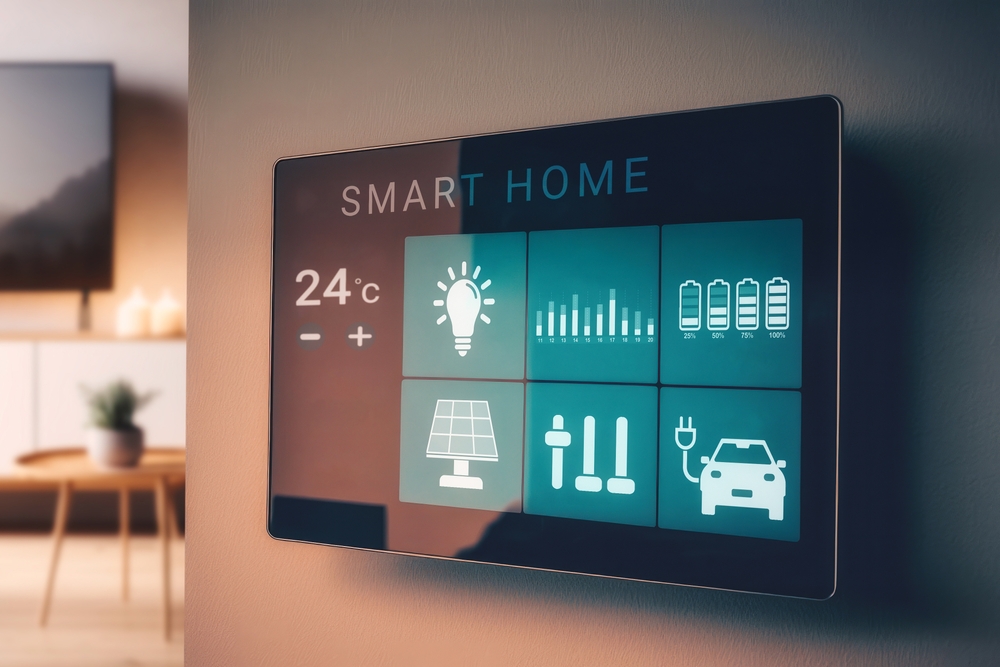The Billionaire Smart Home Isn’t Just Smart—It’s Sentient
Forget smart thermostats and talking speakers. Imagine a home that knows you better than you know yourself—anticipating your moods, fending off threats before they materialize, and digitally erasing your presence from the grid. This isn't science fiction; it's the stark reality for the ultra-wealthy.
As technology accelerates, it isn’t transforming all lives equally. While the average consumer experiences incremental upgrades, the global elite are living in environments that resemble next-gen command centers more than traditional homes. For billionaires and elite property owners, technology is no longer convenience—it’s infrastructure, security, longevity, and total control.
The Bespoke Brain: AI Ecosystems for Ultra-Luxury Living
In ultra-high-end homes, “smart” no longer means a few connected devices—it means a full-sensory environment built around a custom AI core. These properties operate like private, responsive ecosystems, powered by bespoke systems that govern everything from light and air to security, entertainment, and biofeedback wellness data.
Specialized integration firms like Savant, Crestron, and Delos work directly with the wealthy to develop AI-trained systems that adapt to emotional cues, micro-adjust climate settings, and even shape circadian lighting to support mental clarity and recovery. These homes learn a resident’s stress indicators, detect subtle behavior patterns, and react—often before the human even knows what they need.
Picture this: After a difficult day, your AI system automatically dims lights to a soft amber, increases ionized oxygen levels in the bedroom, plays a personalized ambient track, and even tightens home security protocols—all without a single voice command.
Related: Global Wellness Trends 2025: Separating Scientific Breakthroughs from Celebrity Hype
Luxury, Automated Security That Thinks Ahead
Security in these properties has evolved beyond walls and cameras—today, it’s preemptive and behaviorally predictive.
Facial recognition, iris scans, geofenced perimeters, and biometric authentication now serve as the baseline. Layered atop that is a suite of AI surveillance systems capable of identifying anomalies in movement patterns, analyzing heat signatures via drones, and flagging behavioral irregularities before they become threats.
In places like Palm Beach, Bel-Air, or the Swiss Alps, homes feature hardened server rooms, panic rooms equipped with air scrubbers, and even private cybersecurity teams using software by firms like Darktrace or Palo Alto Networks to fend off digital intrusions.
These properties aren’t just secure—they’re proactively defensive ecosystems, always-on, always learning.
Climate Control Meets Bio-Optimization
Wellness is no longer confined to a gym or spa. In elite homes, HVAC and environmental systems are designed to optimize the human body.
High-end purification systems remove pathogens, viruses, pollen, and even mold spores, rivaling clinical hospital-grade air systems. Climate systems incorporate biometric feedback from wearables or hidden sensors to adjust humidity, air pressure, and temperature to the exact requirements of the individual.
Some homes, developed in conjunction with firms like Delos or Wellness Real Estate™, include acoustic tuning, light therapy rooms, and oxygen-enriched sleeping quarters, aimed at extending lifespan, increasing mental focus, and supporting hormonal balance. These are not mere luxuries; they are built-in life extension strategies.
Related: The $7 Trillion Wellness Economy: The Gold Rush
Energy Sovereignty & Climate Resilience
One rapidly growing facet of billionaire smart homes is energy independence—not for eco-virtue signaling, but for autonomy and survival.
Many are equipped with:
- Solar roofing with Tesla Powerwall or Sonnen battery banks
- Private water filtration and recycling systems
- Backup power from natural gas or off-grid microgrids
- Climate-proof materials and wildfire detection systems
These homes are designed to survive grid collapse, cyberattacks, and environmental disasters—ensuring the owner remains untouched by disruptions that affect everyone else. Resilience is the new luxury.
Invisible Fortresses: The Elite's Quest for Digital Anonymity
Digital erasure is another new frontier in luxury living. The ultra-wealthy now seek homes that function like Faraday cages—spaces where data does not escape and outside signals cannot penetrate.
They feature:
- VPN-hardened networks
- Encrypted private clouds
- Electromagnetic shielding
- Anti-drone airspace controls
- Voice and video scrambling hardware
From anti-surveillance glass to AI-driven disinformation masking, the goal is clear: total privacy by design. These features ensure the elite can live, communicate, and store data without traceability—a privilege functionally impossible for the average consumer.
Architects of the Future: Built for Tech from the Ground Up
Leading firms like SAOTA, Olson Kundig, and Meier Partners are collaborating directly with tech engineers and former defense contractors to design homes that natively integrate AI and security.
In exclusive compounds such as The Mountain (Beverly Hills) or The Strand (Turks & Caicos), we’re seeing properties where architecture and software are co-developed. These aren’t just smart homes—they’re engineered environments, built from the blueprint stage to be intelligent, anticipatory, and utterly private.
Key Features of a Billionaire Smart Home
- Custom AI trained on individual behavior
- Biometric-integrated wellness environments
- Predictive drone surveillance + real-time threat detection
- Private encrypted data servers + isolated networks
- Anti-surveillance glass + electromagnetic shielding
- Energy autonomy + climate-proof infrastructure
- Light, sound, and air systems tuned to neuro-performance
- Onsite cybersecurity and physical defense layers
The Widening Divide: Two Futures Under One Roof
While the middle class negotiates with subscription bundles and freemium voice assistants, the top 0.01% are designing engineered realities. This technological divergence isn’t just about luxury—it’s about privileged access to autonomy, privacy, and even life extension.
These tools aren’t filtering down. They're so bespoke, expensive, and high-risk to democratize that they may remain locked to elite spheres indefinitely. That raises urgent questions:
- Are we witnessing the birth of a new tech aristocracy?
- Can empathy survive when daily realities split so completely?
- What happens when only a few can afford to live above chaos?
Conclusion
The billionaire smart home is more than architecture—it’s a privatized version of the future, curated for control, resilience, and invisibility. For the ultra-wealthy, daily life is now a closed-loop system of personal optimization, defense, and silent orchestration.
Everyone else is living with tech.
They are living inside it.
Related: How Wellness Tourism Became a Billion-Dollar Business Class Perk
Related: Canyon Ranch, SHA, and the Rise of the $20,000 Executive Retreat














